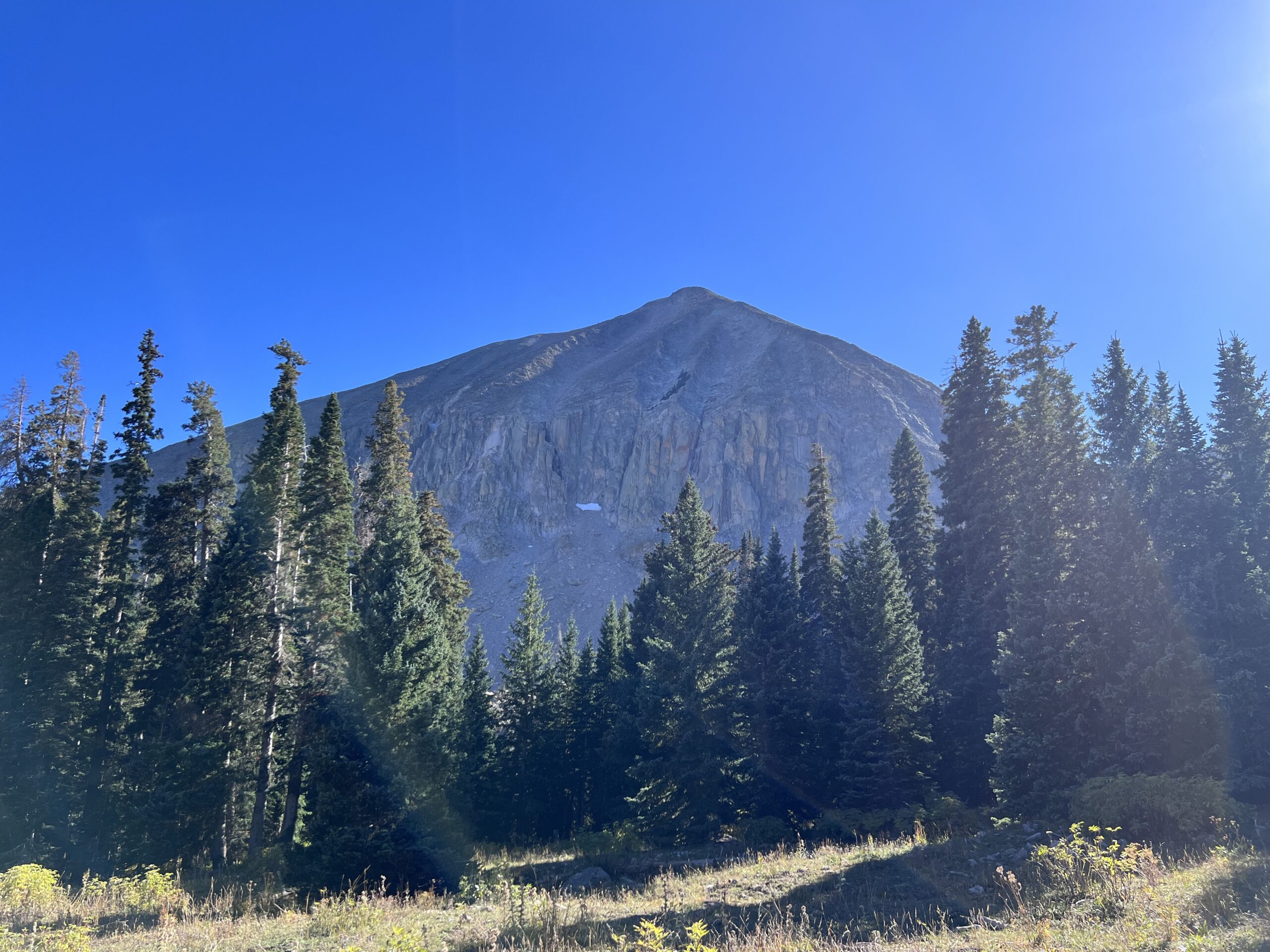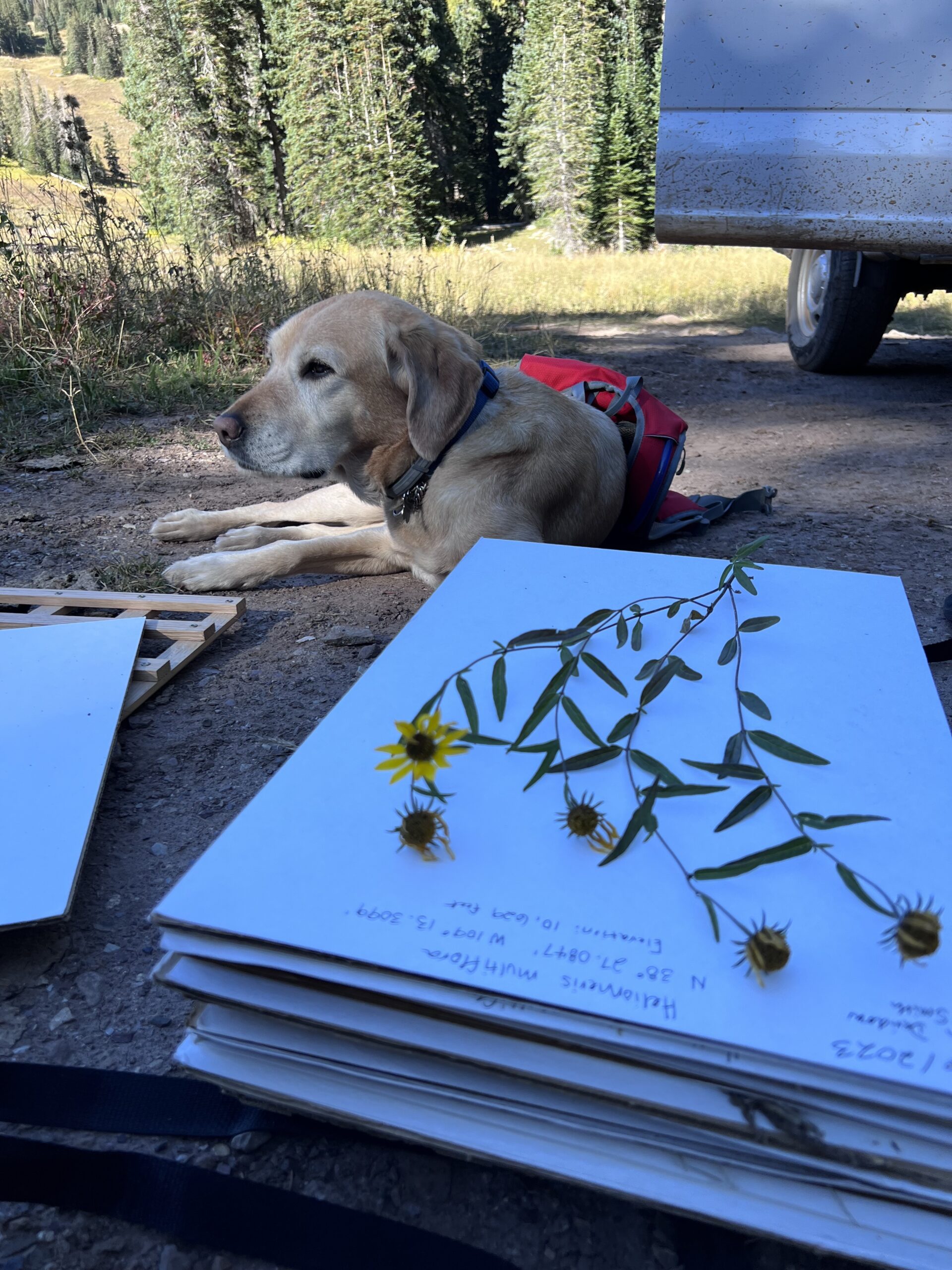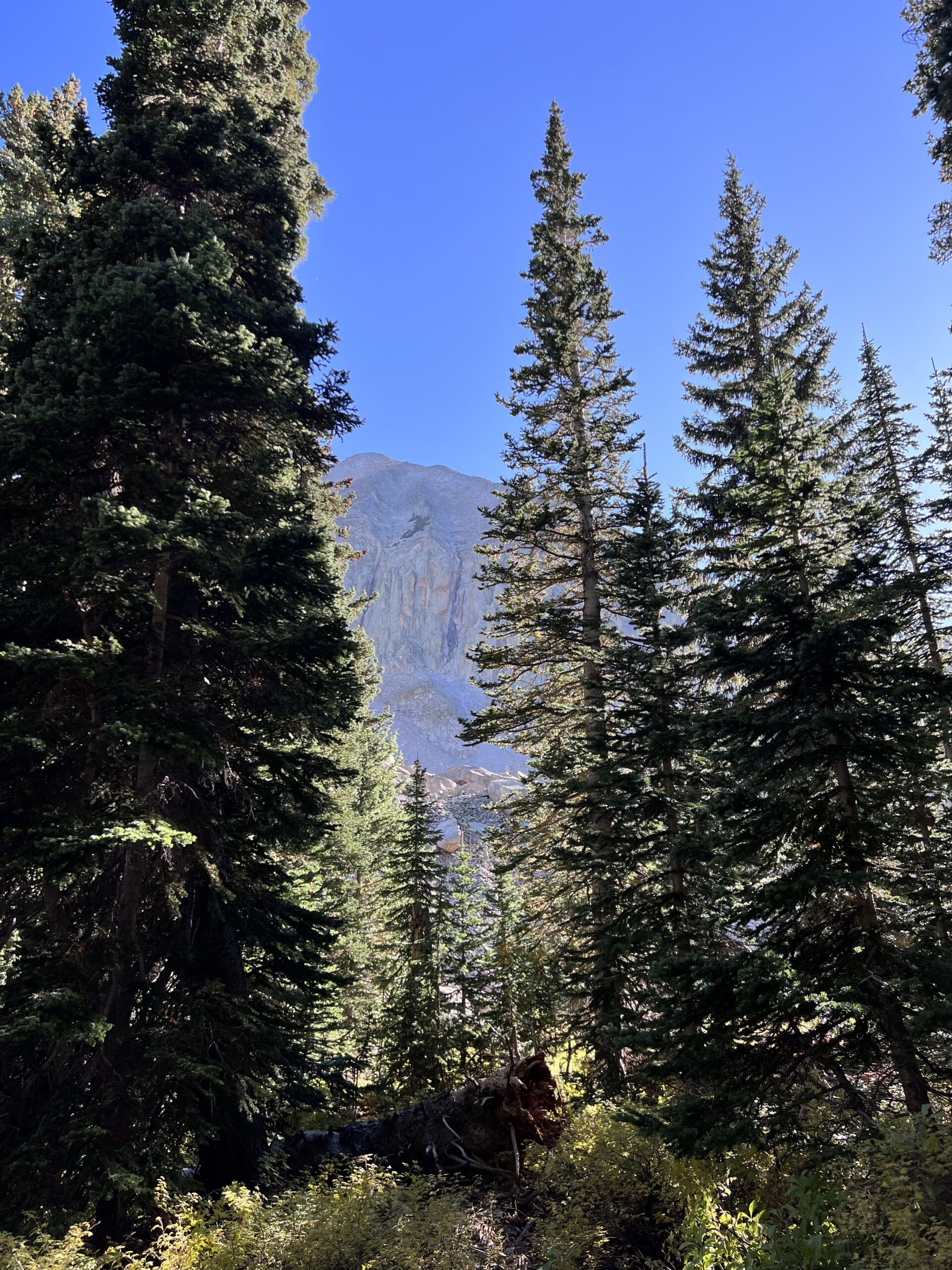September came and went in the blink of an eye. Its parting gift to us was a slight chill in the air and a blanket of fall colors that is slowly falling over the mountains. The changing colors has sparked a new excitement in me for the La Sals. Every place I explore feels new again.
This past week, our final species has started to seed but the first three weeks of September we were left waiting. This allowed us to take a couple days to shadow the archeologist here.
Working as an archeologist here is not like working as an archeologist in most other forests. Part of the Bears Ears National Monument is managed by the forest and the monument has over 100,000 cultural and archeological sites. While with the archeologist we were able to see a few historical sites and a prehistoric site. After a short hike we reached the prehistoric site. Seeing these structures absolutely took my breath away. Nestled into the rocks were stacked stones cemented into place with a mud mixture. Each rock and piece of mud was placed by hand which was obvious due to the hand prints still visible in the mud. Along with hand prints there were in some placed imprints of corn that was farmed and being stored in some of these structures.
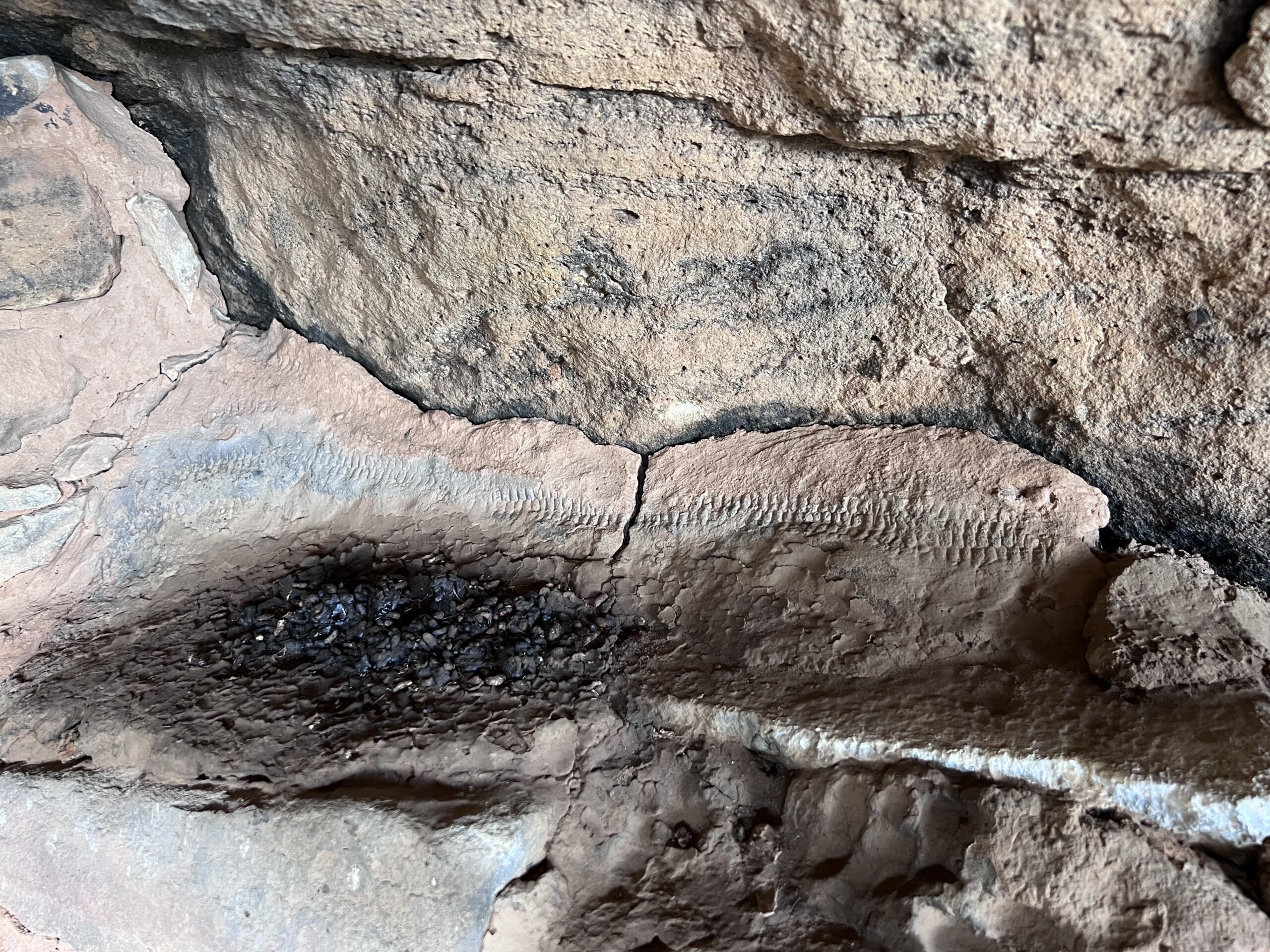
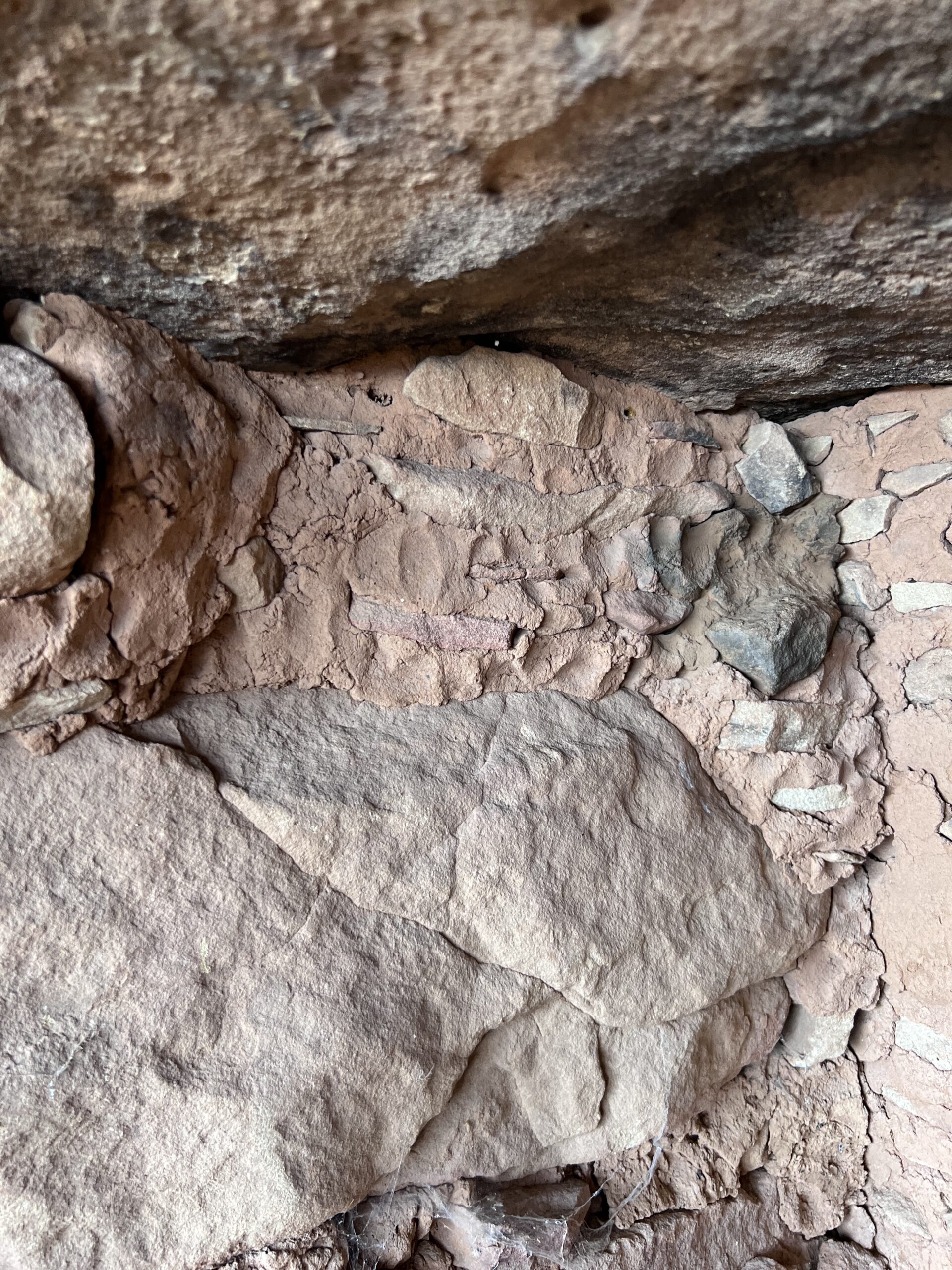

Since we had some time to kill, I was also able to help the alpine botany crew with some repeat photo sites. The hike to the sites was about 4 miles in and was one of the harder hikes I have ever done. Once at the sites, we were taking repeating photos of goat wallows that had been been monitored in the years prior in order to document changes. The goats were introduced to the La Sals about 10 years ago as a game animal and their wallows can harm rare alpine plants as well as cause soil erosion.

When it came time to start collecting our seeds the aspen leaves were just beginning to change to a vibrant yellow. The last week of September, despite it now being fall, was sunny and clear up in the mountains. Our last species was found growing mostly around 10,000 ft in elevation giving us the most beautiful views.
Our last day of collection in September, we went to a canyon nestled between the two tallest peaks in the La Sals. The sun was shining and we were collecting near a stream with breathtaking views of the mountains. It was a perfect fall day and ending to September.
